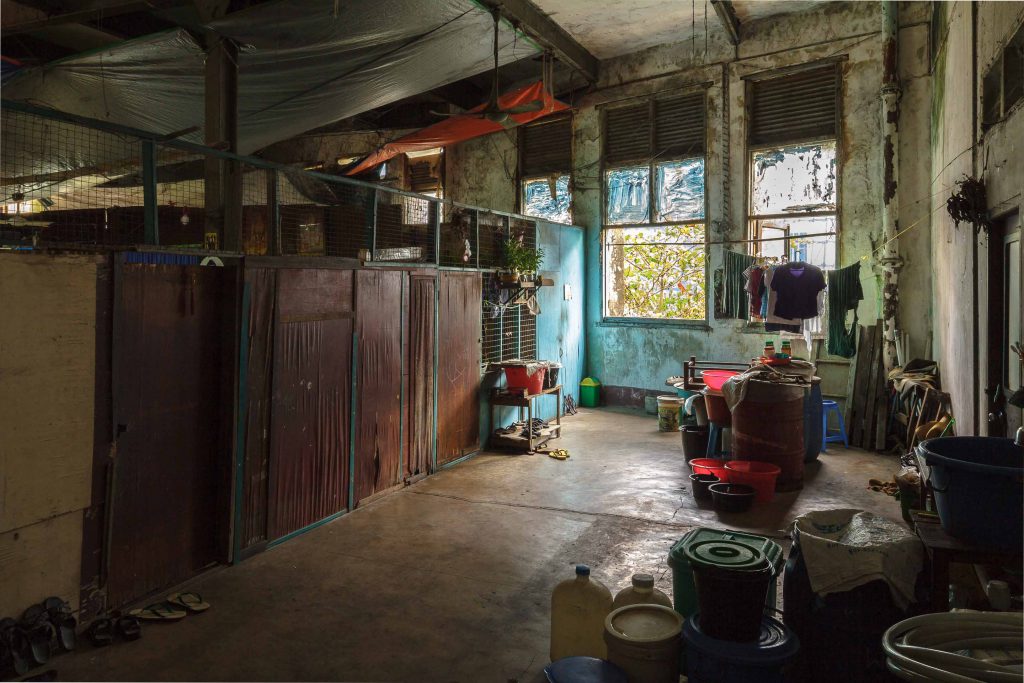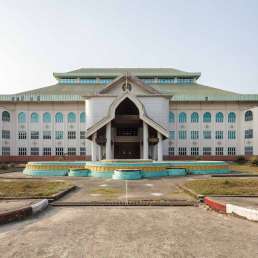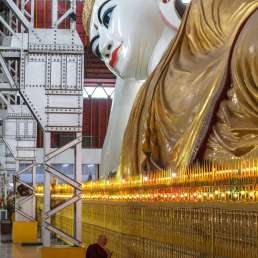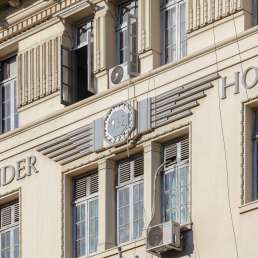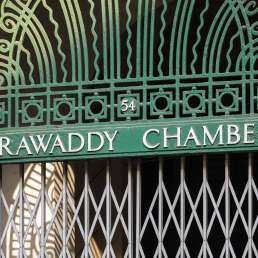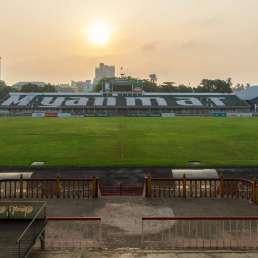Address: Bank Street
Year built: 1905
Architect: Unknown
This faded but beautiful red brick building occupies a stretch of Bank Street that was once downtown Yangon’s most desirable address. Its lot is not square: the 34th Street façade is slightly longer than the one on 33rd. A small (and rat-infested) courtyard allows air and light into the inner rooms. Like Sofaer’s Building, Balthazar’s was once state-of-the-art and featured an electric lift. The building’s steel framing was supplied and erected by Howarth Erskine Ltd. The tiles are Italian imports. After decades without maintenance, the inside of the building is in a sorry state: the lift has not worked for decades; the inner courtyard is overgrown with weeds; the staircase is crumbling. Most of the ironwork is rusty. Some offices have attached plates of corrugated iron to their ceilings in order to prevent plaster from falling down. Others have installed plastic sheeting to protect against water leakage. The building’s higher floors are partially squatted. Given the short walking distance to the nearby former New Law Courts Building, lawyers’ offices have traditionally used Balthazar’s Building and several still do so today. There are some tea and copy shops on the ground floor and up the darkened staircase, which curls around the lift shaft.
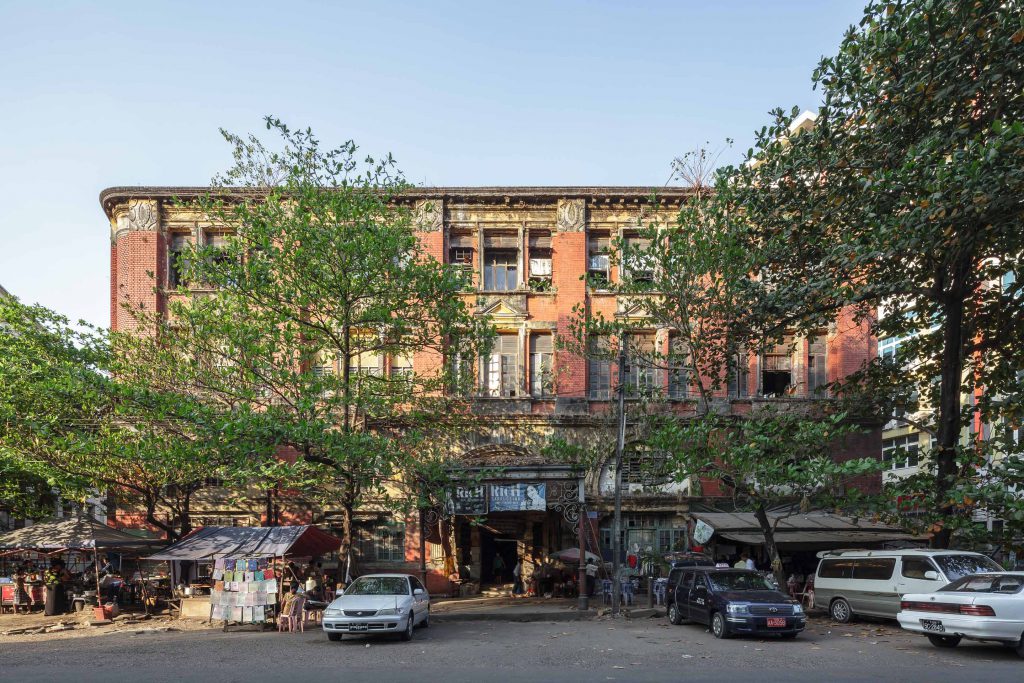
Samuel Balthazar, an Armenian businessman born in Isfahan, Persia (now Iran), arrived in Rangoon in 1866 after making his name in his father’s business. The Burma branch of Balthazar & Son became a reputed import-export, real estate and investment management firm in Rangoon. “Balthazar’s Building” was its elegant calling card, a short walk from the port and Sule Pagoda. It also housed the offices of other companies, including the German engineering firm Siemens. The Balthazar family was active in public life. Samuel Balthazar held leadership positions on the Municipal Committee and in the Chamber of Commerce. With his brother, Carapiet, the family donated a statue of Queen Victoria that stood in Fytche Square (now Mahabandoola Square). The statue was removed by the Japanese during the war.
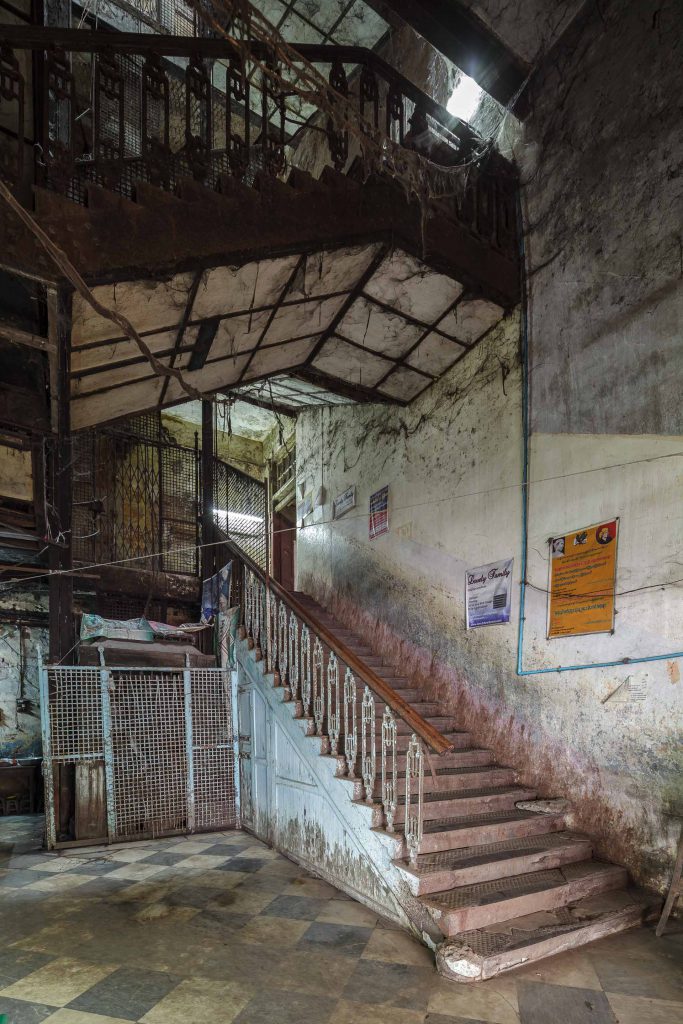
The Armenian community was travelling to Burma as early as the 17th century (and like the Balthazars, traces its roots to Persia). In fact the Armenian Church is the oldest Christian church in Rangoon today. Another Armenian family, the Sarkies brothers, built and ran the Strand Hotel. Basil Martin (Martirossian), the last “full” Armenian of Burma, died in 2013. It isn’t rare to hear Burmese people claim Armenian lineage. (Mr Martin’s brother fled to Dhaka in 1942 following the Japanese invasion. He still takes care of the Armenian Church in the Bangladeshi capital. Similarly, he is often described as the last Armenian of Bangladesh in news reports.)
